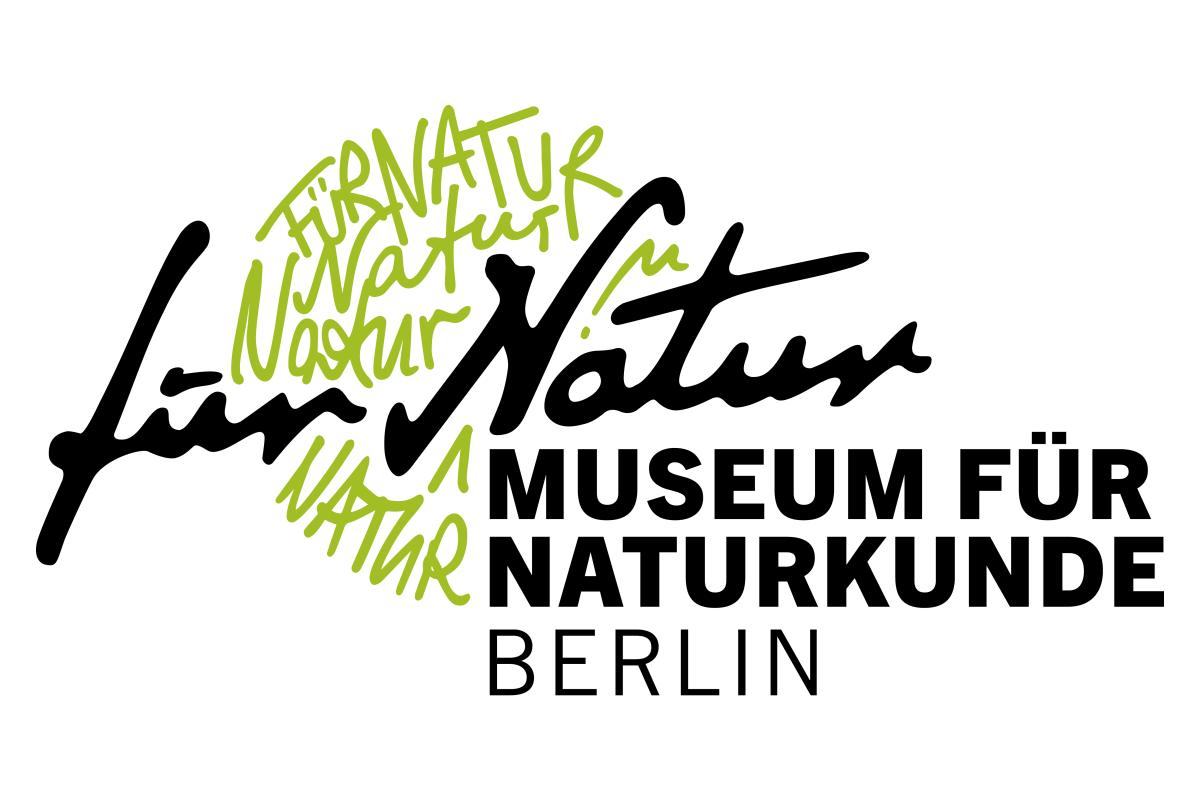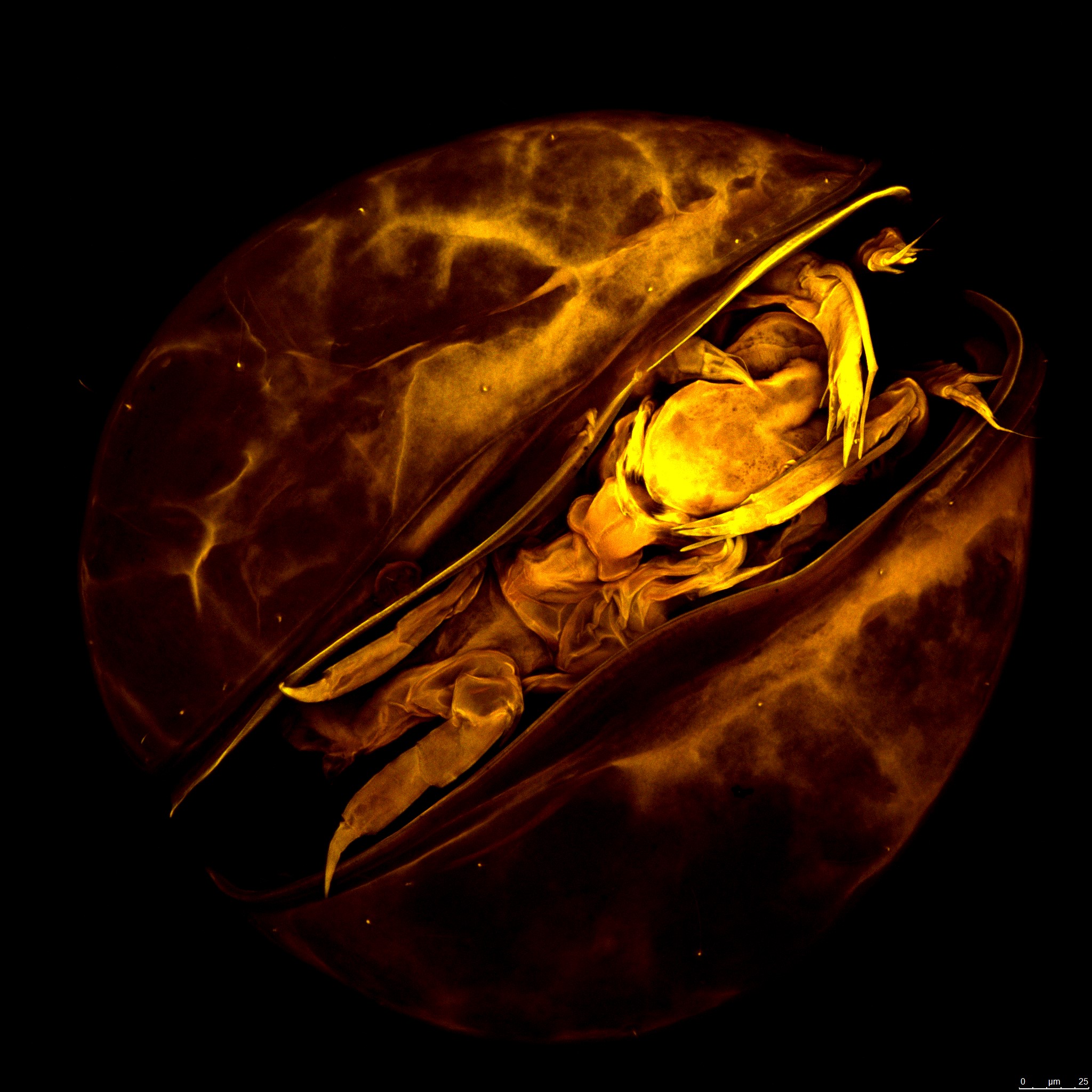Unknown Biodiversity

Major gaps in knowledge – in Germany also
There are around 48,000 animal species in Germany (www.bfn.de, 12 July 2022). Approximately? In fact, this figure is only an estimate. While we still know the exact numbers of mammals, birds, amphibians and reptiles, there are large gaps in the numbers of less conspicuous invertebrates and many other organisms. Small animals with hidden habits, microscopic plants, fungi and especially bacteria are too often overlooked.
However, they are all the more important for the functioning of our ecosystems. Completing the species lists is therefore only a first step, albeit a necessary one. Much more important are the questions: In which ecosystem functions are the species involved? How are the species populations developing? Have they changed in recent decades as a result of human influence? How will they react to climate change and the associated landscape changes? These and other questions cannot currently be answered for many of our species, which also harbours great risks for human well-being. From the perspective of the little ones, Germany is largely an unknown country.
Aquatic fauna
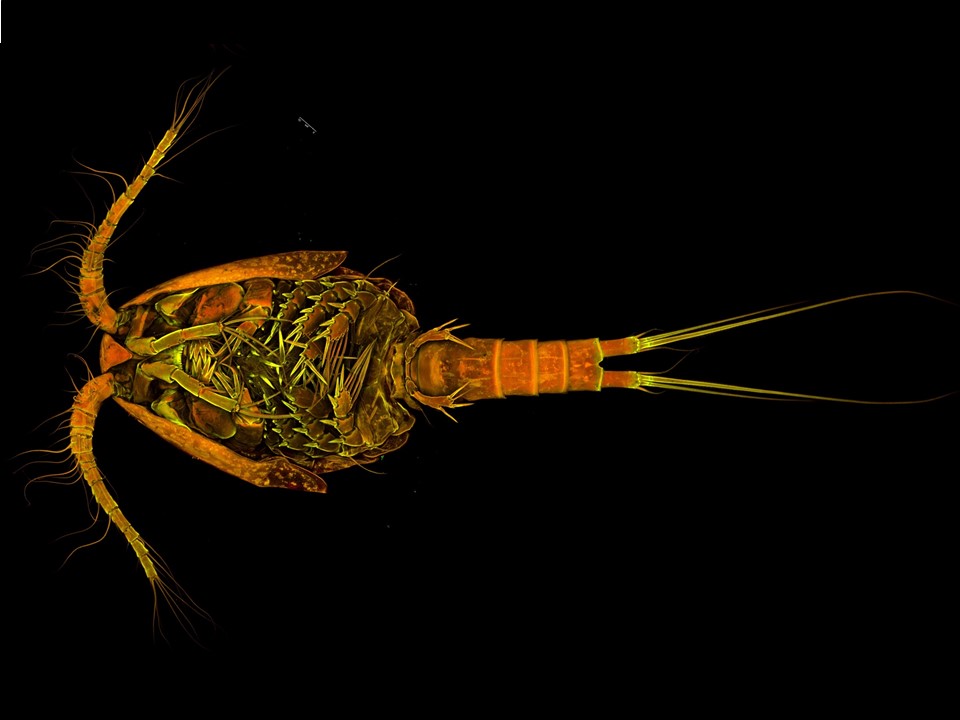
Copepoda
Photo: Underside of Neocyclops sp. from the order Cyclopodia
Copepods are small crustaceans that are common in a variety of aquatic and semiaquatic habitats ranging from moist soils, leaf-packs, groundwater, wetlands, and phytotelmata, to lakes, rivers, estuaries, and open oceans. These tiny crustaceans display a huge range of lifestyles and have colonized almost every single aquatic and semi-aquatic habitat on Earth. They are considered one of the most diverse and abundant groups of animals on the planet with more than 15,000 described species to date. However, their diversity is considered under-estimated -particularly in benthic habitats (e.g. deep-sea), in groundwater systems, and parasitic forms- with a number of expected species ranging from 50,000 to 450, 000.
Moreover, copepods are considered important as ecosystem service providers, they have a control role in aquatic food webs, they contribute to the active transport of carbon, nitrogen, and phosphorus into the deep ocean through respiration and excretion, they are a huge part of the marine snow, and they are a pivotal link between different tropic levels. Despite their ecological importance, copepods are one of the less-studied animals on the planet; however, they are an ideal group to test fundamental hypotheses on both drivers shaping current distribution and patterns of species richness in different habitats such as groundwater systems in Germany.
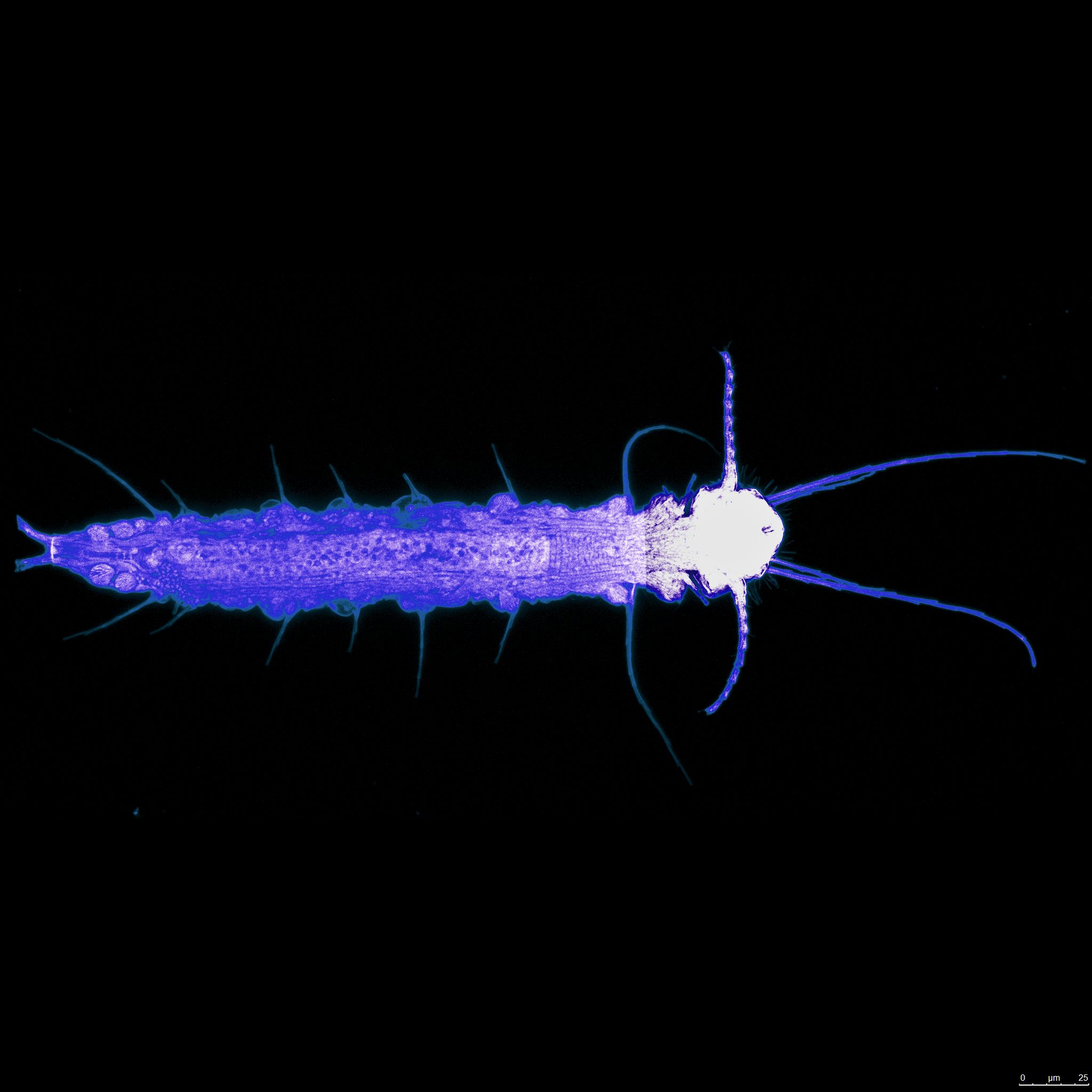
Gastrotricha
Photo: A yet undescribed species of the marine gastrotrich genus Chordodasiopsis with a total body length of 280 µm (imaged with a confocal laserscanning microscope)
Gastrotricha form a monophyletic group within the Bilateria and are possibly related to the flatworms. Gastrotrichs are typical members of the meiofauna, sediment-dwelling animals mostly less than 1 mm in size. The marine Macrodasyida are predominantly interstitial organisms, while the gastrotrich subtaxon Paucitubulatina shows an emphasis of distribution in limnic habitats. However, marine Paucitubulatina are as well typical elements of the interstitial community, but there are epipelic, periphytic, planktonic and even semi-terrestrial forms among freshwater species. The marine genus Neodasys plays a unique part in terms of systematics as it is quite likely the most primitive lineage within Gastrotricha. Gastrotrichs are mainly worm-, strap- or flask-shaped animals with complex organ systems and oftentimes complicated surface differentiations such as plates, scales, spines, hooks, or keels. Body length is usually between 120 and 700 µm, while few species may have a length of up to 3 mm or less than 80 µm. Gastrotrichs feed on microscopic organisms such as bacteria, certain protists or unicellular algae and are therefore an important link between the microbial food webs and higher trophic levels.
Currently we know about 900 species from both the freshwater and the marine realms. Due to their delicate bodies and mostly cryptic life, Gastrotricha are amongst the least studied animals and the expected number of still undescribed species only in the world oceans is estimated to be about 2.500. A comparable number of undiscovered freshwater species, if not even more, is expectable from the diversity of freshwater habitats. This means that even in a rather well-studied region like central Europe, many unnamed species will wait for their discovery. For studying these tiny and fragile organisms, a broad spectrum of methods is applied, ranging from advanced microscopy (CLSM, SEM) to DNA-based analyses of evolution and species delineation.
Unicellular organisms
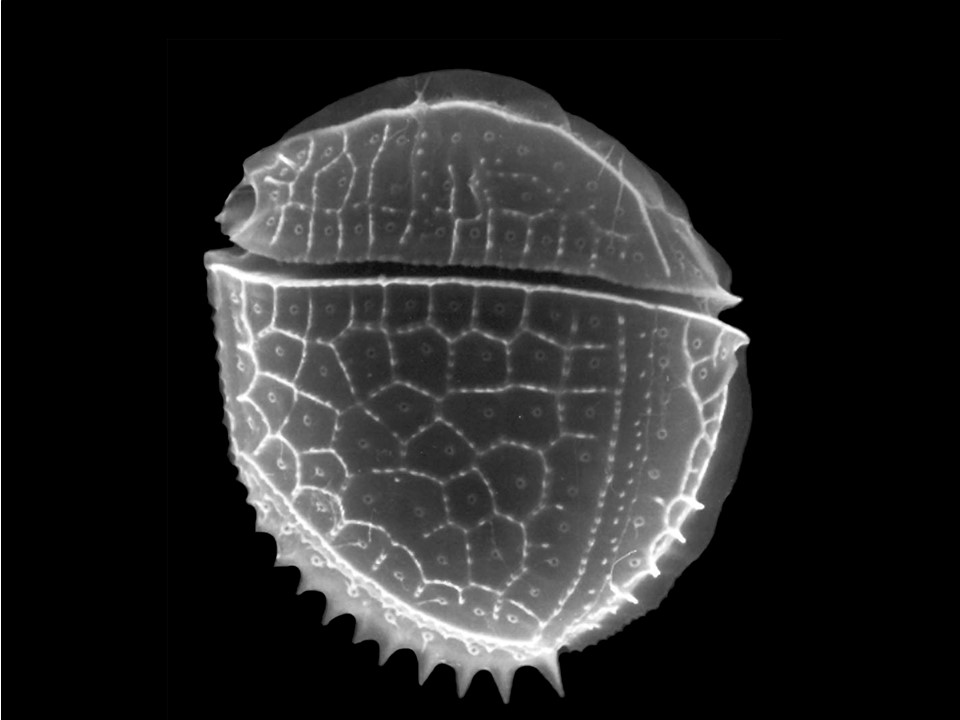
Dinoflagellate
Carinadinium ornatum (Hoppenrath 2000) Hoppenrath Reñé et Satta 2021 was discovered in the Sylt Wadden Sea in the sand gap, newly described and became the type species of a new genus.
Dinoflagellates are protists (20-200 µm in size) that are not directly visible to the naked eye and have a characteristic (eponymous) swimming movement. The importance of this eukaryotic unicellular group, which has many fascinating facets (e.g. morphological and chloroplast diversity, complex organelles, special features of the nucleus), should not be underestimated. They are important producers and consumers in aquatic food webs, symbionts in corals, parasites of marine organisms and producers of toxins that are dangerous to humans. Dinoflagellates also have special biochemical and genetic features that make them one of the most interesting groups of protists (Hoppenrath et al. 2018, DOI:10.1002/biuz.201810650).
Unlike phytoplankton, the micro(phyto)benthos, which includes dinoflagellates, is not part of monitoring programs. The first comprehensive species documentation for benthic dinoflagellates exists for the North Frisian Wadden Sea. Only around 50% of the species have been identified. Of the unknown species, only a third have been newly described. In the following years, further, mostly undescribed species and genera were added to the list. Sampling in the East Frisian Wadden Sea has shown that the undescribed diversity is not yet fully known. No data are available for the Baltic Sea. Initial metabarcoding analyses have revealed that 11% of the diversity is probably not recorded microscopically. Potentially toxic benthic (epiphytic) species are increasingly spreading northwards, but the epiphyte communities on macroalgae have not yet been studied in Germany.
Hoppenrath et al. 2023, Senckenberg-Buch 88, www.schweizerbart.de/9783510614240
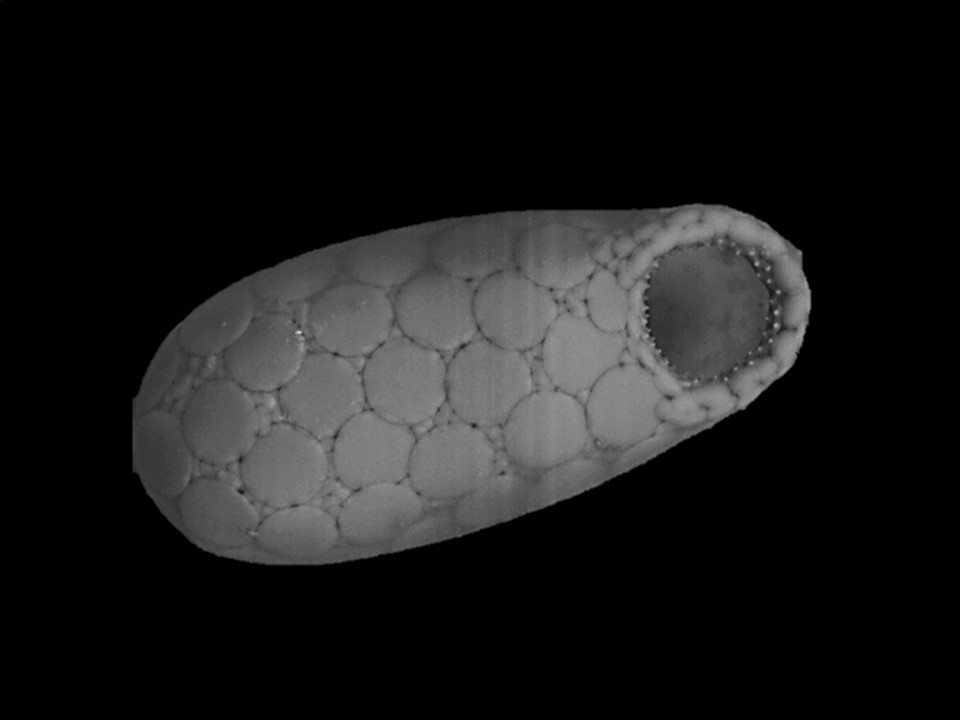
Testate amoebae
photo: Empty shell of Trinema sp. by Valentyna Krashevska
Testate amoebae are a fascinating group of unicellular eukaryotic organisms with a shell found in a variety of freshwater and terrestrial environments. It is important to note that the testate amoebae represent a polyphyletic group, which means that they come from various evolutionary lineages and are not derived from a single ancestor. This diversity of origins contributes to their adaptability and ecological significance.
Testate amoebae exhibit a wide range of shell shapes and sizes (10 µm to 1 mm), which can vary significantly among different species. They play a significant ecological role in their habitats. Testate amoebae are important elements in the microbiome of soils and water bodies.
Their main roles include:
– Nutrient Cycle: They contribute to the decomposition and transformation of organic matter by feeding on bacteria and other microbes, thus making nutrients available in the soil once again;
– Soil Structure: Through their activity, they help improve soil structure and promote the aggregation of soil particles, which supports water retention and air circulation in the soil;
– Indicators of Environmental Changes: Due to their sensitivity to changes in their environment, testate amoebae are useful indicators of environmental health. Their presence or absence can provide insights into the impacts of climate change, pollution, and other ecological stress factors.
Soil fauna
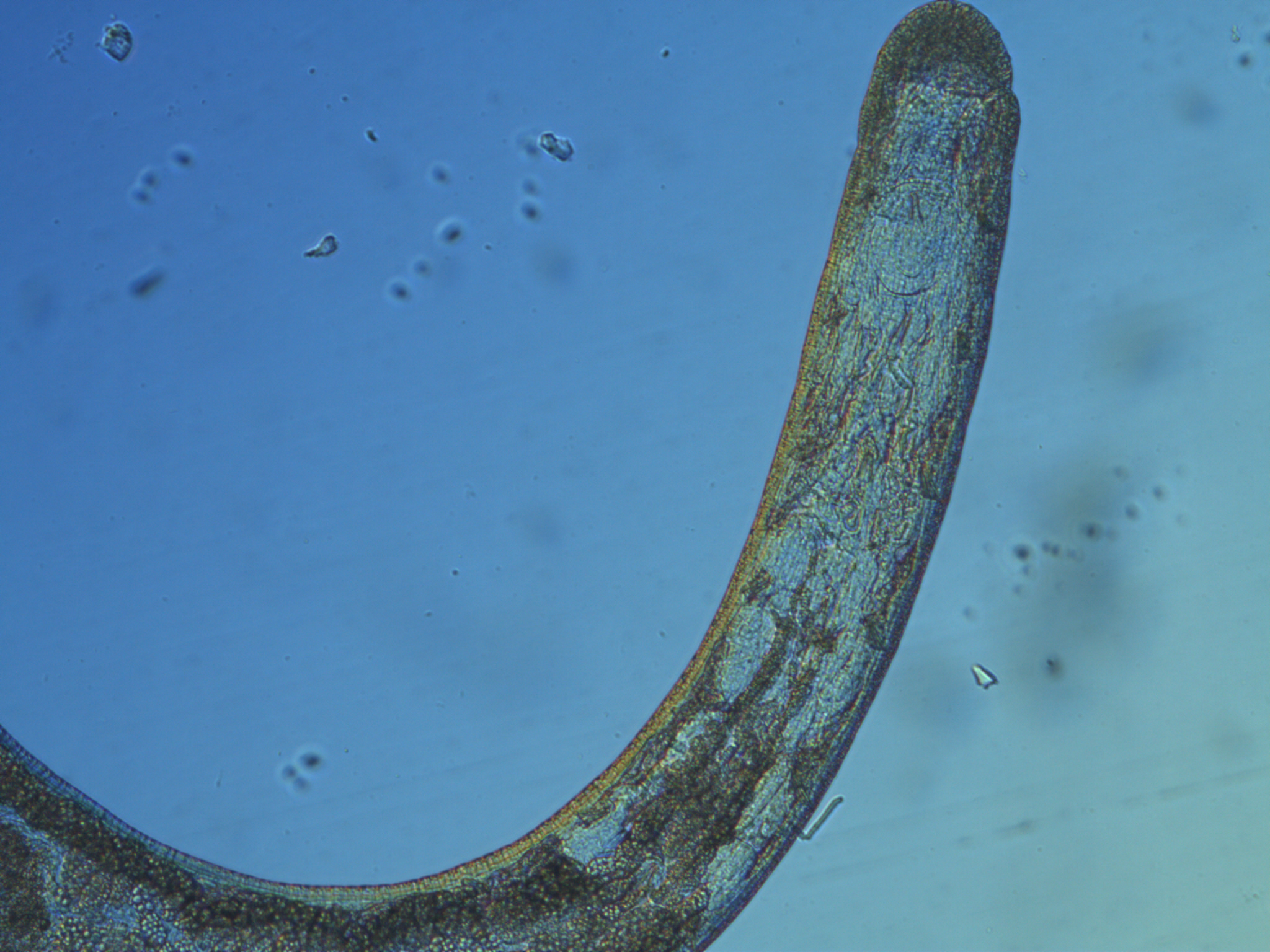
Potworms
Potworms (enchytraeids) are sometimes also called whiteworms and are closely related to earthworms. With a body length of 2 – 10 mm, they are much smaller than the latter, but reach individual densities of up to 100,000 animals per square meter. Potworms are also found in the sediment of water bodies, but the vast majority of the approximately 250 species found in Germany live in soil. They dwell the leaf litter and soil, where they feed on dead organic matter. Their excretions make an important contribution to humus formation. Potworms are hermaphrodites, i.e. they have male and female reproductive organs. However, some species can also reproduce asexually by cutting off body segments, which then develop into new individuals.
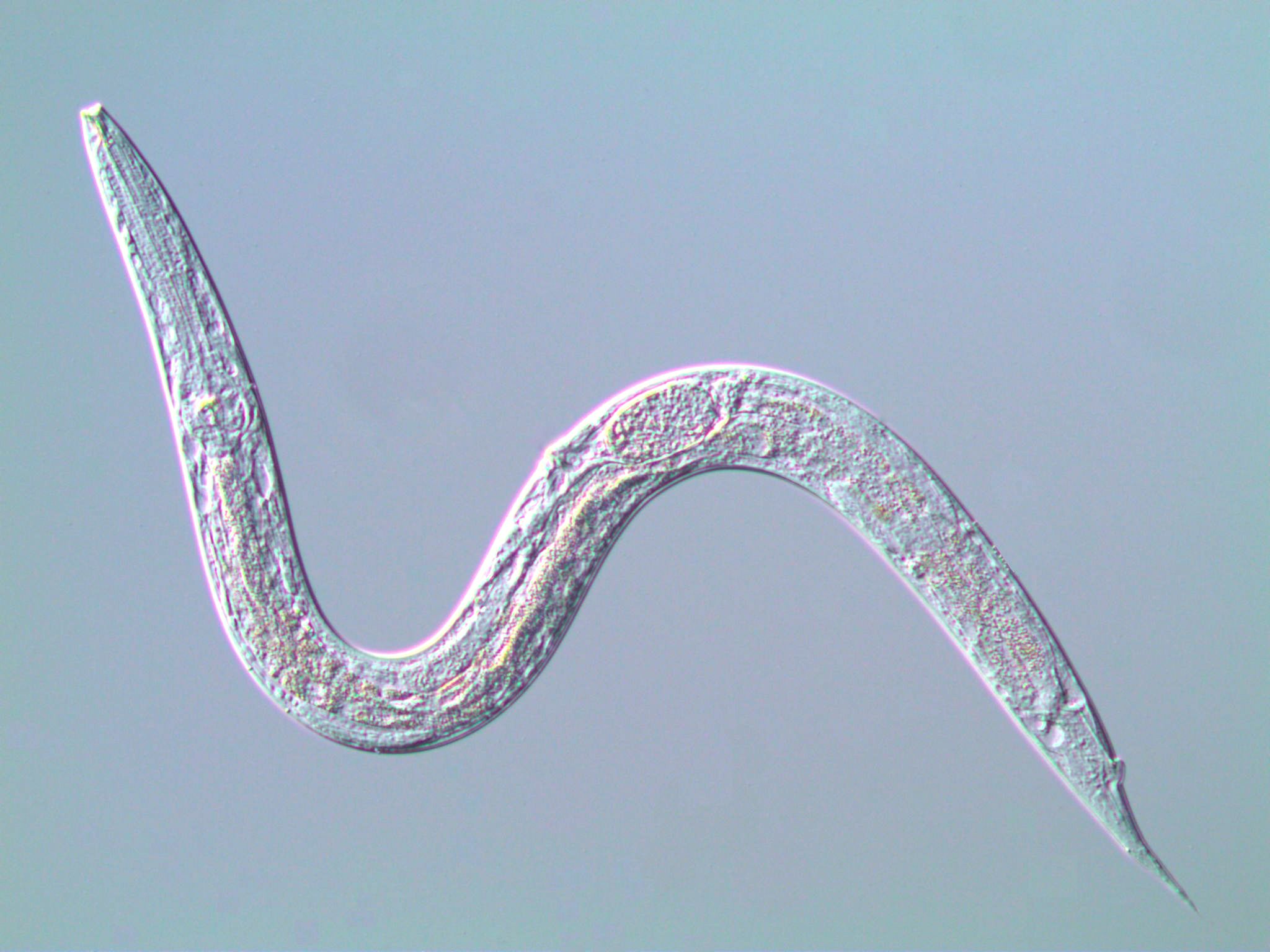
Nematodes
Four out of five multicellular animals on our planet are nematodes. They are microscopically small and live wherever a three-dimensional gap system and – at least temporarily – a thin film of water are available, particularly in large numbers in the sediments of seas, rivers and lakes, as well as in soils, coniferous and leaf litter, lichens and moss cushions on land. There is almost no habitat that nematodes have not conquered for themselves: from the highest mountain peaks to the deep-sea rifts, from the soils of the Antarctic, which are only ice-free for a few days a year, to the sand dunes of our driest deserts. Some species cause great damage as parasites of plants and animals. Most, however, feed on bacteria, fungi, algae, protozoa or other microscopic animals and make a significant contribution to keeping the wheel of the nutrient cycle turning. Around 600 species are currently known from Germany’s freshwater sediments and around 2000 species from our soils.
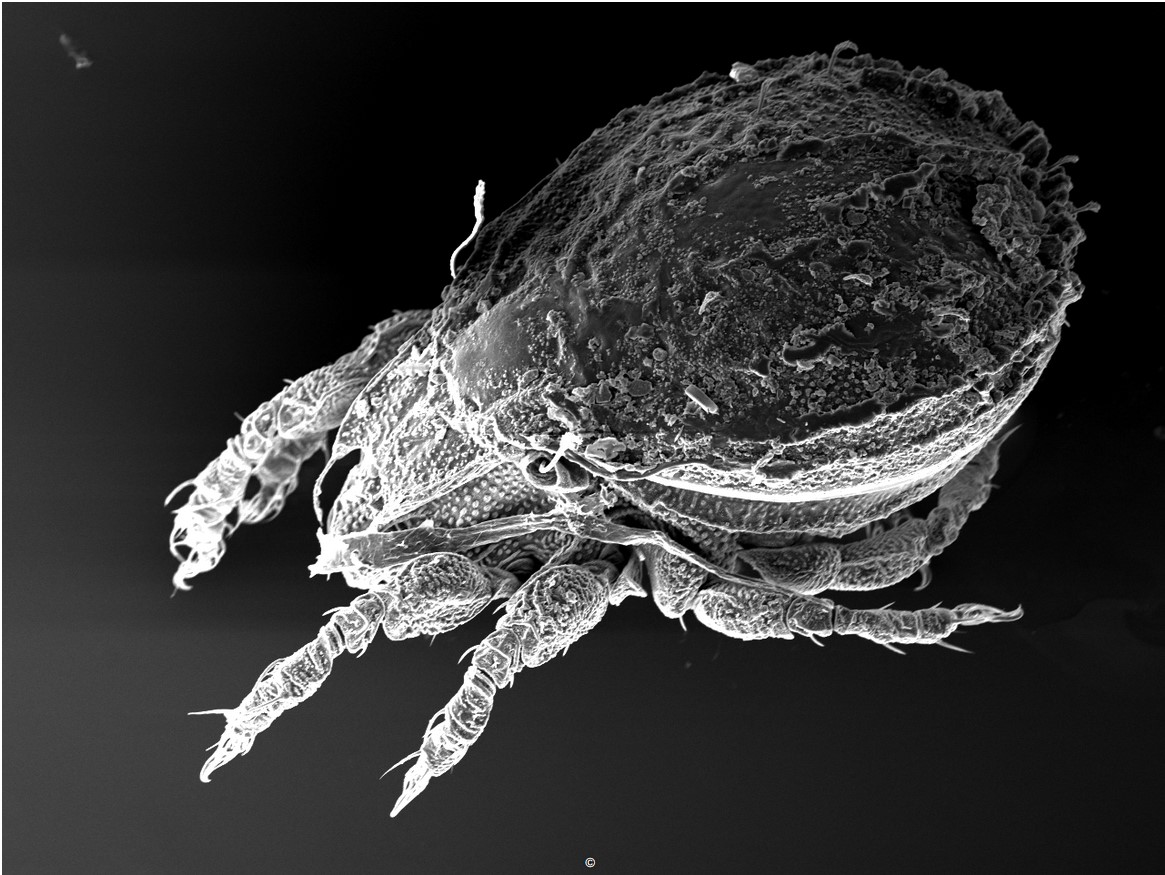
Oribatid Mites
Oribatid mites are the only non-predatory group of arachnids. Instead, they mainly feed on leaf litter and the microorganisms growing on it (fungal hyphae and spores, bacteria, algae). Through their activity, they break up dead plant material and stimulate the growth of microorganisms. The largest number of species and individuals of oribatid mites can be found in soil, but there are also specialists among them that are adapted to life on tree bark, in lichens, as well as bogs or fresh water. Oribatid mites are very small (less than 1 mm), but numerous: in Germany there are around 560 species, and 1 m² of forest soil can harbor up to 200,000 individuals. They are true survival artists, as their strong cuticula protects them from predators.
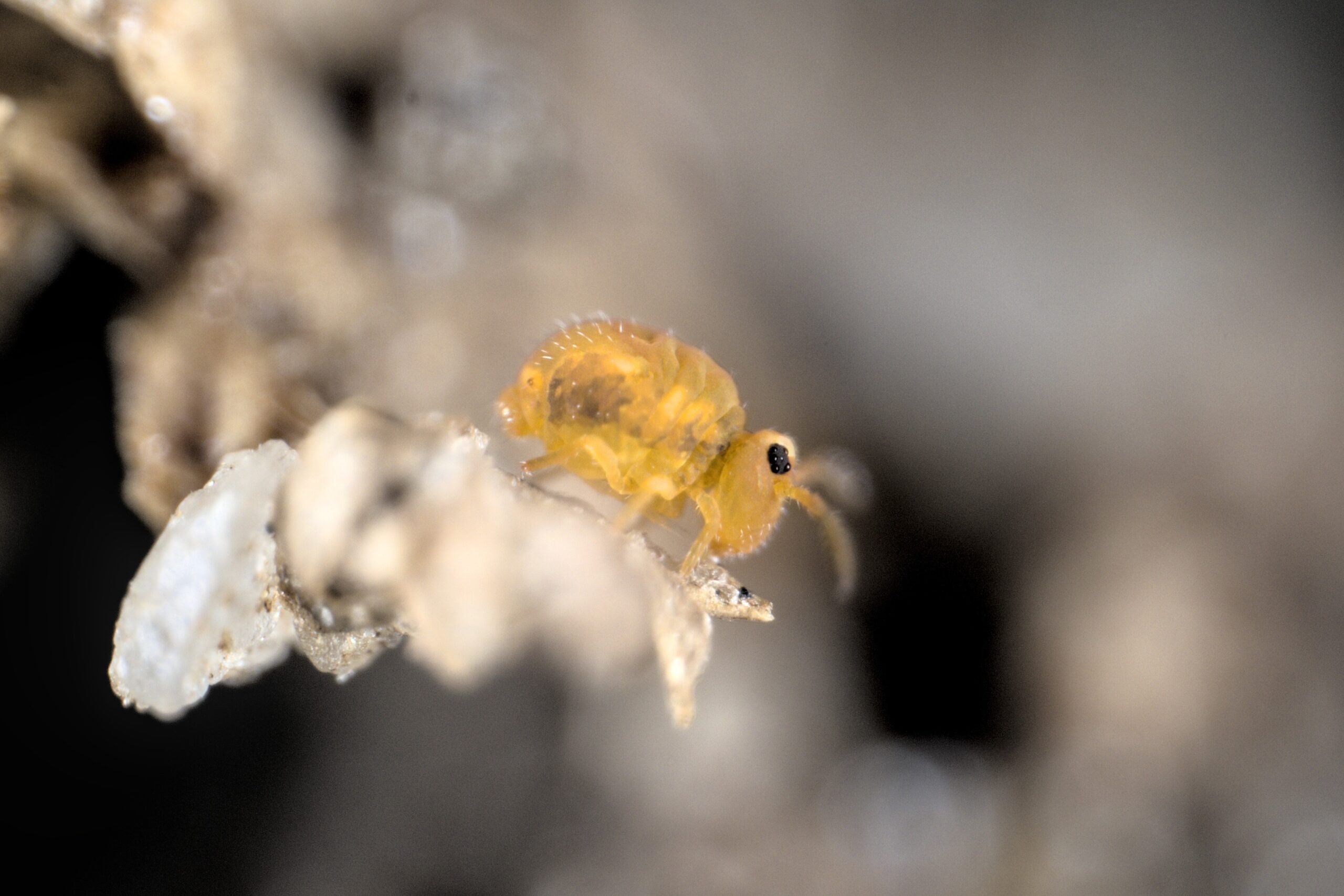
Springtails
Collembola (Springtails), are the second of the four classes of Hexapoda in term of biodiversity, and the first in below-ground habitats. Inhabitants of terrestrial ecosystems since the early Devonian, they adapted to all kind of environment. From the glacial polar regions, the driest deserts, the deepest caves, they found their way. In temperate ecosystems, they are present in all layers: soil, low vegetation, tree canopy, riparian habitat and water surface. Their small size, soft cuticle and subtle morphology makes them challenging, but fascinating, organisms to study.
Insects

Flies
Photo: Megaselia scalaris (Phoridae) by Michael Haas
The true diversity of insects has been a subject of intense debate for several decades (Erwin 1982). Conservative estimates indicate that around two-thirds of the world’s insect species have been described. In contrast, Hebert et al. (2016) proposed that the Cecidomyiidae family of Diptera, or gall midges, alone might encompass over one million species, potentially nearly doubling the total number of insect species described over the past 250 years.
The majority of Diptera species cannot be identified at the species level. Among the most significant groups in terms of species and individuals are the „lower Diptera“ (gnats and midges), and some Brachycera families (flies). Lower Diptera, with around 3,700 species, make up one-third of the known German fly diversity and are found in almost every habitat, often in large numbers. Their larvae are crucial for the nutrient cycle, inhabiting a variety of environments including soil, rotting wood, plant and animal tissues, fungi, dung, sewage, and water.
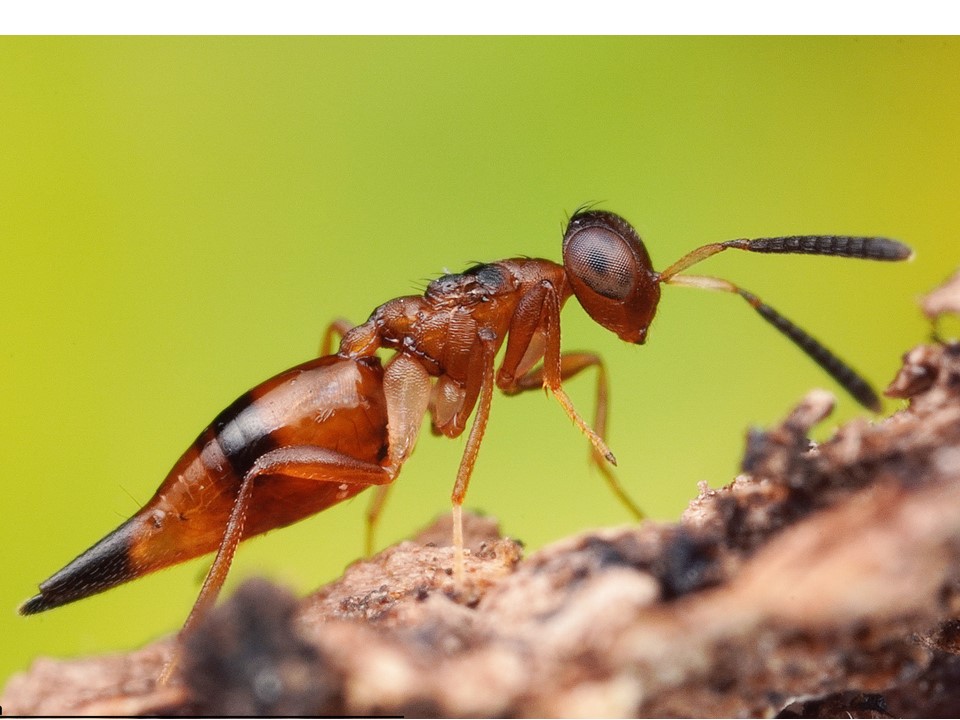
Parasitoid wasps
photo: Dipara petiolata (Pteromalidae) by Aron Bellersheim
Parasitoid wasps are the most diverse and species-rich group within Hymenoptera, comprising 80% of the species, while the Aculeata and Symphyta together account for about 20%. Bees, although important pollinators and indicators of habitat changes, represent only about 5% of the German Hymenoptera fauna, with 586 recorded species.
The role and importance of most Hymenoptera species in Germany remain largely unknown. Parasitoid wasps, abundant in almost all terrestrial ecosystems, play a crucial role in regulating phytophagous insect populations, making them essential for biological pest control and economically valuable.
However, their high trophic level and specialization make them exceptionally vulnerable to extinction. Despite their prevalence in biodiversity monitoring samples, these taxa are often understudied. Comprehensive taxonomic inventories are necessary for accurate ecological interpretation, and excluding these „dark taxa“ hampers our understanding of environmental changes, such as insect decline. Urgent action is needed to develop taxonomic expertise and identification tools for these groups.
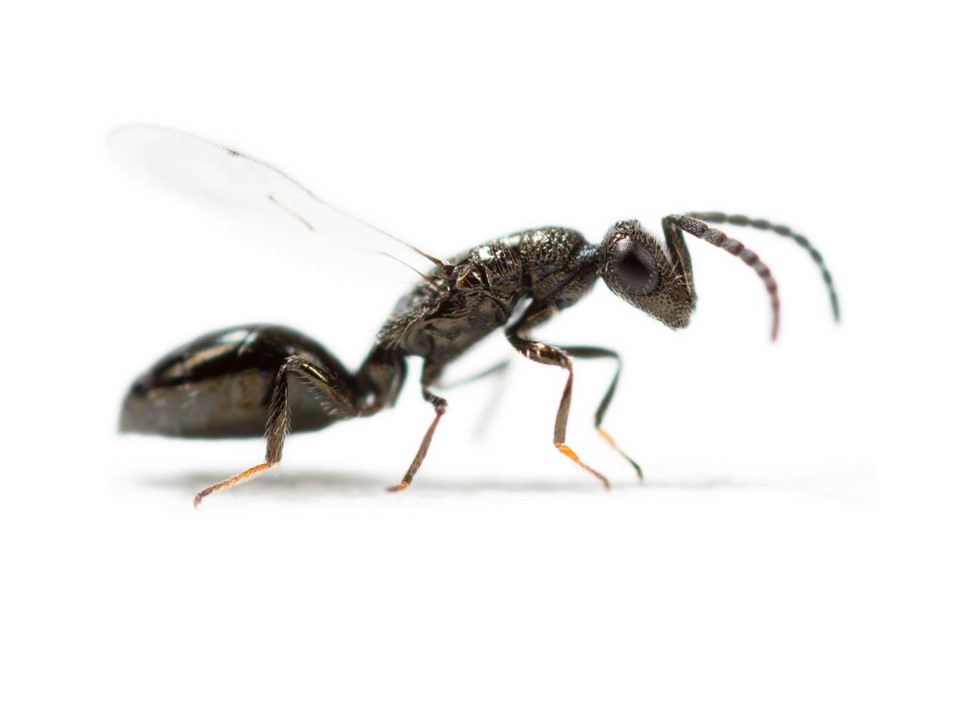
Parasitoid wasps
The parasitoid wasps are one of the least known groups among insects and at the same time they are incredibly diverse. There are thousands of species in central Europe and probably more than a million worldwide. All parasitoid wasps – except for a few subgroups that returned to a phytophagous lifestyle – develop on or in other arthropod taxa, mostly insects, thereby killing the host, in contrast to a „parasite“. Diversity, abundancy, and the close link to other taxa make them crucial in our understanding of ecosystems and in our understanding of the evolution of biodiversity. Furthermore, they are important for proper conservation of biotopes and species, for which they so far have always been neglected. Finally, they hold some economically important roles as antagonists of pest species and as biological control agents, as pollinators and as a largely unwritten pharmacopoeia. When magnified, parasitoid wasps are fascinating and often appear agile and charismatic. They are diverse not only in species but also in morphology and life history. Among parasitoid wasps, you will find the smallest of all insects as well as large-bodied colourful forms. You will find the strangest and most beautiful creatures and even after decades of work on parasitoid wasps you will encounter some new striking wasps that you have never seen before.
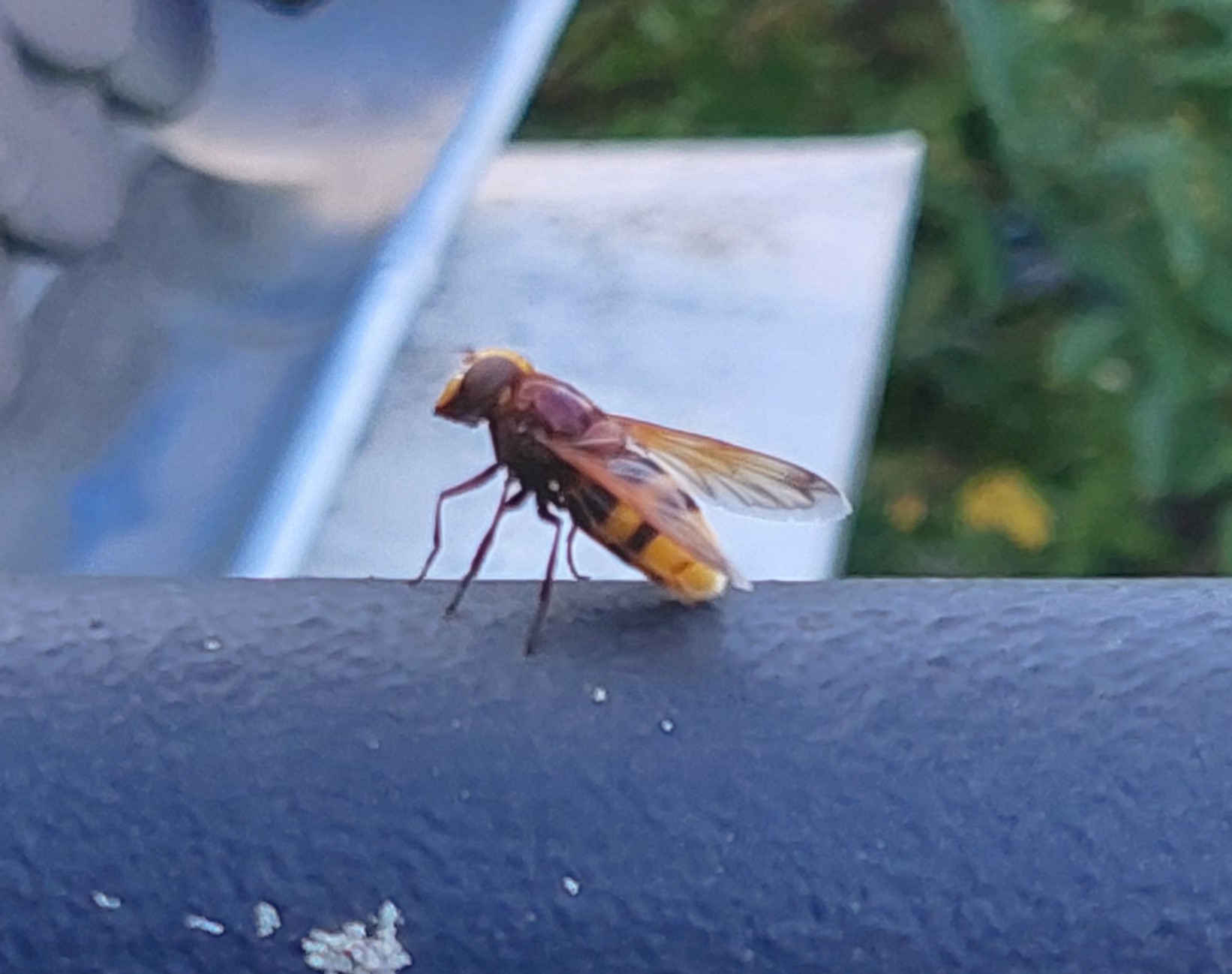
Flower flies
Flower flies or hoverflies (Diptera: Syrphidae) are one of the most species-rich dipteran families with over 6300 described species worldwide. Adults of most species of flower flies are conspicuous flower visitors, where they feed on both pollen and nectar, but their larval feeding habits are strikingly diverse: from phytophagous species and pollen feeders, fungivorous larvae feeding on fungal fruiting bodies, saprophagous species (including saproxylic) feeding on dung, decaying wood and filter feeding in water bodies of several types, and predatory taxa feeding on brood of social Hymenoptera and on several groups of soft-bodied arthropods. The life history of Syrphidae and their abundance make them vital players in maintaining ecological networks and providing beneficial ecosystem services such as pollination, biological control of pests, recycling of organic matter and redistributions of essential nutrients. The ecological pollination service provided by the flower flies is estimated to be worth around US $360 billion per year and is vital for human food safety. Their morphological diversity is astonishing and they are excellent mimics of aculeate Hymenoptera. Indeed, this Batesian mimicry is more frequent and better developed in the Syrphidae than in any other family of Diptera.
Fauna of marine sediments

Medusozoa
Medusozoa is the name given to the taxa of Cnidaria (cnidarians) in whose life cycle medusae (jellyfish) occur. The medusae are usually produced by sessile, usually very small polyps. Larger polyp colonies and the jellyfish they produce, which can occur in masses (‘jellyfish blooms’), have a strong impact on marine ecosystems and negative effects on fisheries, aquaculture and tourism. The morphological species identification of Medusozoa in benthic and plankton samples is often difficult and standard monitoring methods do not adequately detect the species. This leads to gaps in knowledge about the diversity, distribution and ecological role of polyps and jellyfish. Non-native species have therefore also been overlooked in Germany, sometimes for long periods of time. The Medusozoa on German coasts include the Hydrozoa, Scyphozoa and Staurozoa.
Microorganisms
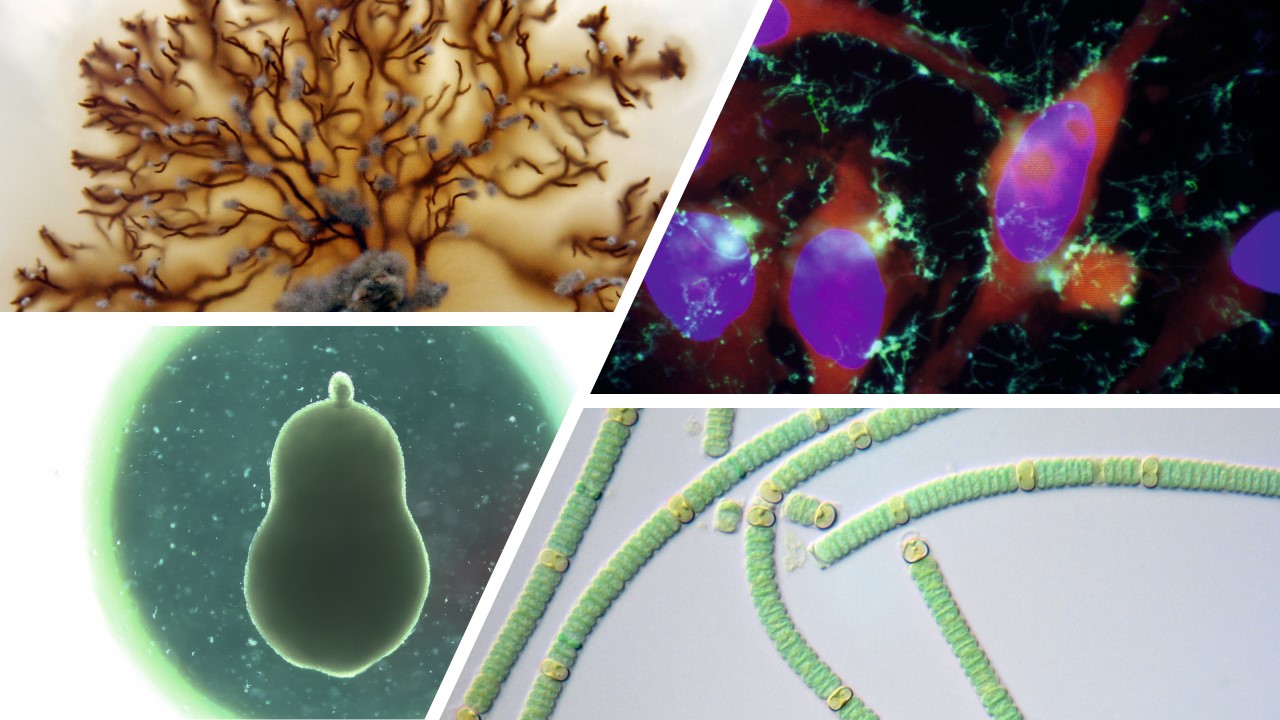
Microorganisms
Microorganisms are microscopic creatures that we cannot see with the naked eye. They are everywhere on our planet. Bacteria, viruses, fungi, yeasts and single-celled organisms such as the paramecium are microorganisms. The world of microbes is so diverse that researchers have still not discovered and decoded them all. Scientists assume that life on earth originated from a single bacterium around 3.5 billion years ago, from which plants and animals eventually developed through evolution. Some bacteria can decompose plastic, others glow in the dark and still others can orientate themselves to the Earth’s magnetic field. Bacteria can live with or without oxygen and can grow and thrive in acid or at temperatures above 100 degrees Celsius – they are extremely diverse.
Microorganisms live in compost heaps, where they process our organic waste into soil, in the sea, where they produce oxygen, or in the soil, where they decompose pollutants and improve soil quality. They can be found in hot, sulphurous springs, in the air, on our hands or in the deep sea, where sunlight never reaches. Microorganisms simply live everywhere on our planet! Bacteria, fungi and co. live both on and in our bodies. Researchers currently assume that, based on the number of cells, more than half of our body consists of bacteria, viruses and fungi. The situation is similar in other animals. The microorganisms in our gut form the microbiome. It regulates our immune system and also produces vital vitamins.In our mouth and on our skin, we are colonised by microorganisms that can protect us from pathogens. Very few microorganisms make us ill. Most of them ensure that we humans stay healthy and the environment stays in good shape. Although they are so small, microorganisms do an indispensable job for our health. Anyone who thinks of viruses only in terms of coronavirus is not yet familiar with the world of bacteriophages. This type of virus can specifically destroy pathogenic bacteria.
Humans were using microorganisms even before they knew they existed. For centuries, they have been used to produce wine, beer, yoghurt and bread. They are also used to produce medicines such as penicillin and insulin. Microorganisms not only live together with humans and animals, but also with plants. For example, trees communicate with fungi in the soil and supply each other with nutrients. Microorganisms are everywhere, incredibly important and indispensable for all living things on our planet. We can still learn a lot from them and benefit from them.
Editors: Saskia Schirmer, Sven-David Müller and Manuela Schüngel, Leibniz Institute DSMZ-German Collection of Microorganisms and Cell Cultures GmbH
Fungi
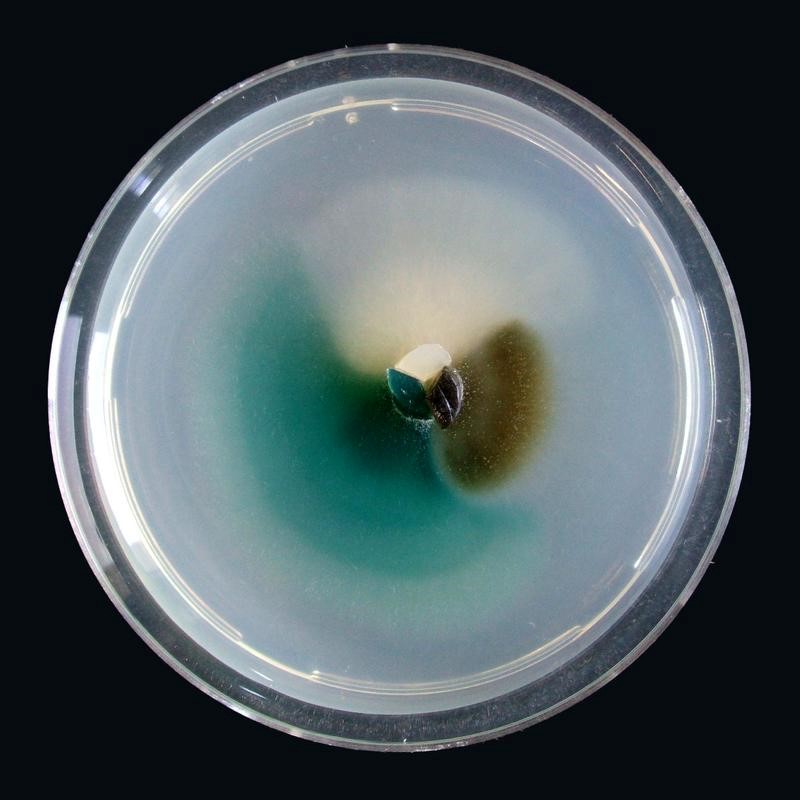
Fungi
The realm of fungi represents a large part of the invisible biodiversity and currently comprises just over 156,000 described species, although it is estimated that there are up to 6 million species worldwide.
Fungi are around 0.75 to 2.7 billion years old, whereby the later groups of fungi (e.g. Basidiomycota) are evolutionarily orientated towards the degradation of cellulose-containing material, such as organic material of plant or animal origin, through the development of often complex hyphal networks. These organic compounds, which are rich in humic substances, are resistant to degradation by bacteria and therefore remain in the environment for a long time (e.g. due to their water-repellent properties and complex chemical structures).
In contrast to the higher fungi, the original species spread with the help of flagella and are therefore ideally adapted to life in water. In bodies of water, they have a close relationship with their host, for example diatoms, through an often parasitic lifestyle and therefore play an important role in controlling food webs. In summary, this makes fungi an important part of the global carbon cycle.
Arachnids
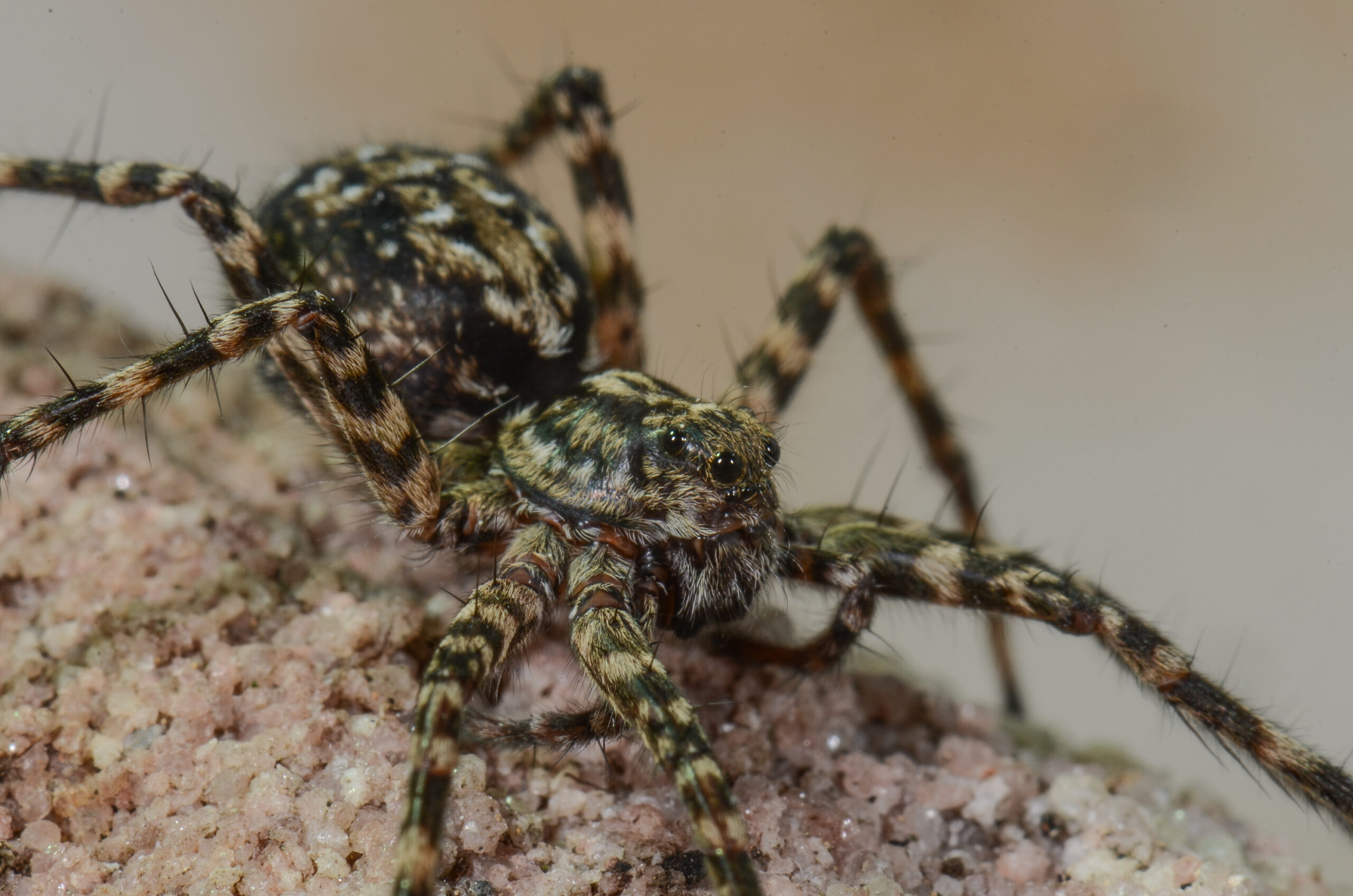
Spiders
Photo: Acantholycosa norvegica by Hubert Höfer
Spiders (Araneae) are predators that can be found in high numbers and abundance in all terrestrial ecosystems. They live in meadows, forests, mountains and deserts, in caves and on glaciers, in the intertidal zone and with one species (the native water spider Argyroneta aquatica) even in fresh water. Most species are generalists that prey mainly on insects, but also on other arthropods, including spiders. They are more strictly carnivorous than other predatory invertebrates, such as ground beetles and centipedes. According to a recent estimate, spiders consume between 400 and 800 million tonnes of prey per year. By comparison, human meat consumption is around 400 million tonnes per year. They therefore make a significant contribution to natural pest control in agricultural ecosystems.
Over 52,000 recent spider species are listed in the World Spider Catalogue. Around 1000 species have been recorded in Germany. The ecological success of spiders is based on a number of special biological features, the products of which are also of great interest to humans. With the exception of a few species, all spiders possess venom, which they use to paralyse or kill their prey or to defend themselves against enemies. The food is digested extraintestinally – outside the body – and absorbed as a liquid. All spiders produce spider silk from protein. Different types of thread are used to protect the egg clutches, to build hiding places, to lay security and communication threads and many (but not all) spiders produce webbing.
Many species have special requirements and react quickly to changes in their habitat, resulting in changes in species spectra. With sufficient knowledge of the requirements of individual species and the characteristic communities of different habitat types in their natural habitats, spiders can be used for the nature conservation assessment of processes, sites or landscapes.





